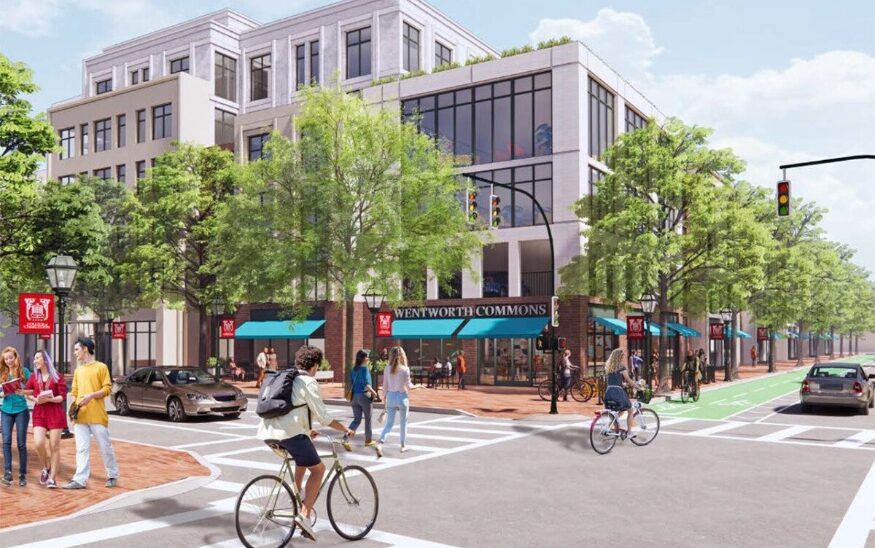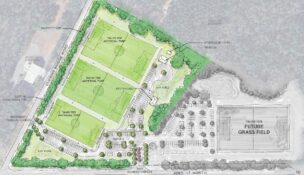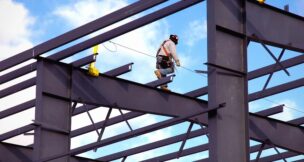
The College of Charleston is eyeing the future as it has begun developing its 2023 Campus Framework Plan. (Courtesy photo)

The College of Charleston is eyeing the future as it has begun developing its 2023 Campus Framework Plan. (Courtesy photo)
Inside College of Charleston’s ‘framework for the future’
Jason Thomas //December 13, 2023//
The College of Charleston is eyeing the future as it has begun developing its 2023 Campus Framework Plan.
The plan is a roadmap to guide the campus toward its goals moving forward — including those set forth in the 10-year strategic plan that identified three main areas of focus: student success, academic distinction and employee success, according to a news release.
“Underlying all those initiatives — and what helps make them possible — is our campus infrastructure, meaning the physical spaces in which we learn and work,” College of Charleston President Andrew T. Hsu said in the releae. “That is where the university’s Campus Framework Plan contributes to the overall success of the institution, not just over the next 10 years, but over the next 100 years.”
With an eye on space optimization, historic preservation, sustainability and resiliency, the plan outlines an approach to the college’s development and growth in the face of the current challenges of growth in a dense urban context, affordability, innovative academic space, adequate on campus housing, funding constraints and climate vulnerabilities, the release stated.
Plan a ‘menu of vetted and coordinated options’
One of the more underutilized landscapes on campus, the Stern Student Center “backyard” is a large open space that can be reimagined as a lively student gathering place with activities not possible in more traditional landscapes on campus, the release stated.
“It provides great direction for the campus built-environment to promote student success and academic excellence into the foreseeable future,” said John Morris, vice president of facilities management at the college. “It’s a flexible framework to guide preservation, space optimization and sustainability and resiliency. These guiding principles will provide a framework to guide investments in academic space, student life space, housing space, parking and pedestrian circulation, and outdoor landscape improvements.”
It is important to note that the plan is not intended to serve as an announcement of upcoming construction and/or renovation projects, but rather a menu of vetted and coordinated options for adaptive reuse, program relocations, renovated buildings, new construction, landscape improvements and supporting infrastructure, the release stated. The Campus Framework Plan will inform decision making for capital investments as needs arise and resources permit.
“The 2023 Campus Framework Plan had to be realistic, acknowledging sparse land availability and our financial picture,” said Michael Turner, director of the Office of Facilities Planning, in the release. “Land values continue to escalate, leading to a campus that is becoming increasingly landlocked. Revenue is finite and we must keep student tuition and fees affordable. Therefore, we must optimize the utilization of existing real estate.”
Transportation a big opportunity
The college engaged Beyer Blinder Belle Architects and Planners of New York City to develop this plan to guide future development of campus. The firm partnered with leading local, regional and national subconsultants to create a framework, according to the release. It also consulted the campus community, inviting members to an open and inclusive dialogue. Engagements were conducted both in person and online to foster a comprehensive conversation.
“I believe our outreach was unprecedented. We sought input from every voice by interviewing every school, department and office on campus,” said Turner, noting that the planning team interacted with over 1,200 members through three campuswide engagements, 24 stakeholder interviews, over 120 on-campus interactions and over 980 online survey responses.
The team also did a deep dive into the campus’ 158 buildings and the 1,025 acres of grounds in downtown Charleston, the peninsula and the larger region. Together these buildings house just over 3.6 million gross square feet of floor area, the release stated.
Outside of the classroom, one of the biggest opportunities is transportation to, from and across campus, according to the release.
“We realize an urban environment creates challenges for the safety of pedestrians, cyclists and drivers. There is no singular solution, but the Framework Plan builds upon improvements already in motion by the state, city and county,” said Turner, noting that Charleston County has funded safety improvements to the Calhoun-St. Philip Street intersection as part of the upcoming Lowcountry Rapid Transit project and the state has funded traffic-calming measures for St. Philip Street through lane reduction and the addition of bicycle lanes. “Raised crossings have been funded for each side of Green Way on Coming Street and St. Philip Street. Some sidewalks will be widened as part of the project.
“The Framework Plan builds upon these plans by proposing safe, scenic mid-block promenades to divert pedestrians from roadside sidewalks.”
e















